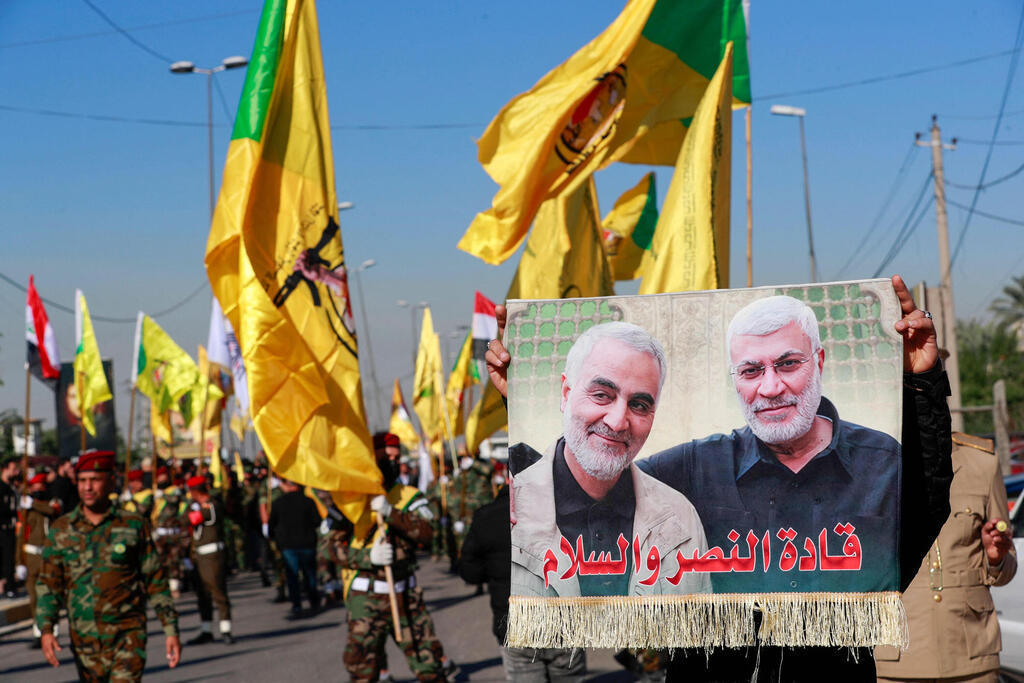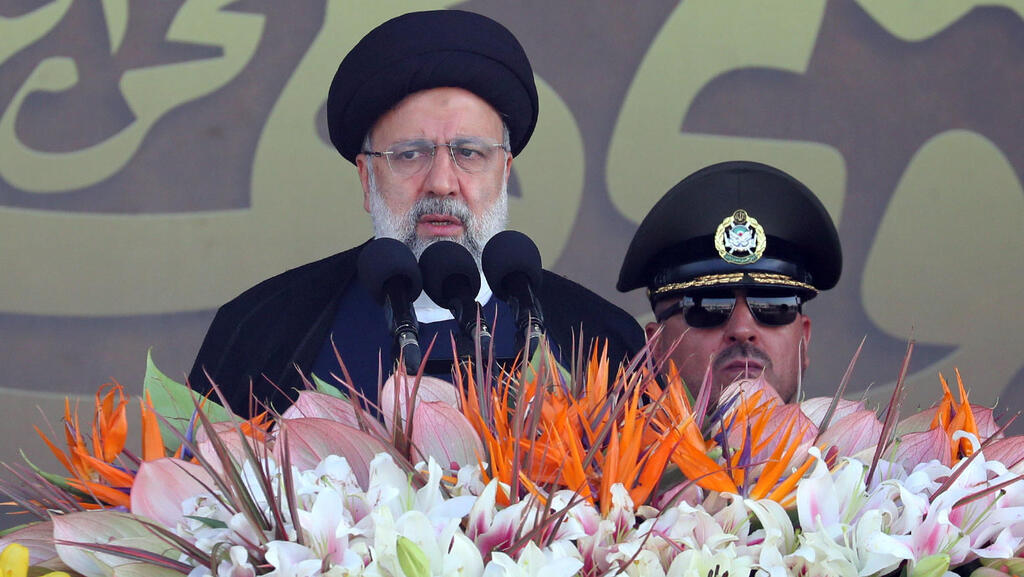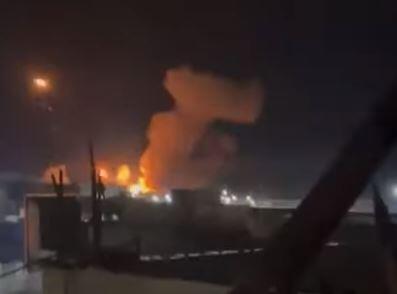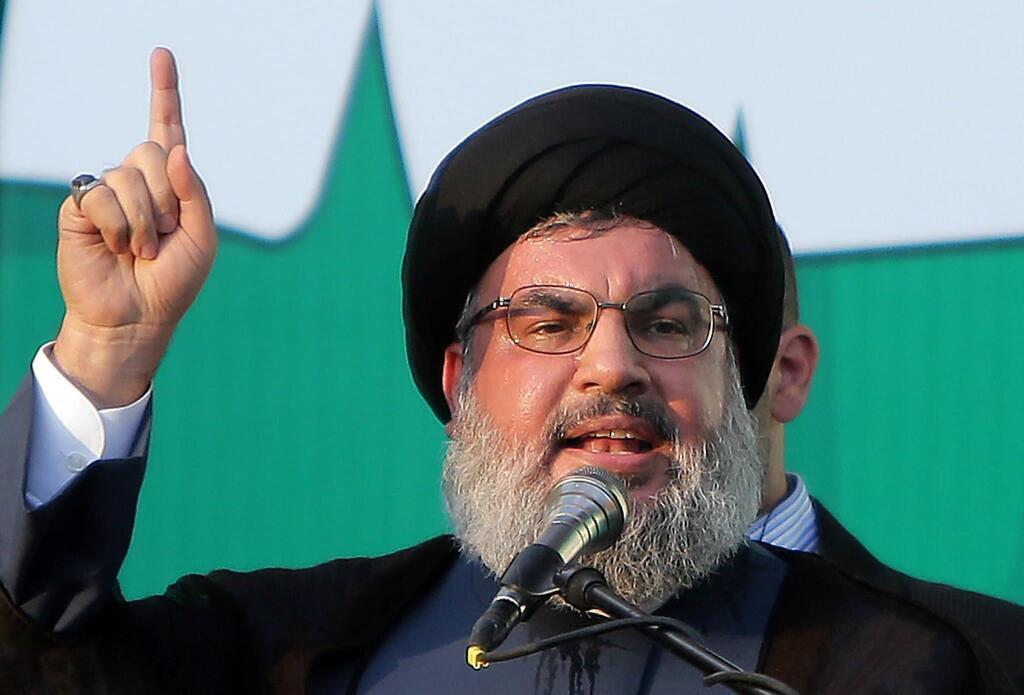Getting your Trinity Audio player ready...
There are several recent signs that amid the escalating tensions with Israel and the U.S., Iran has just blinked. These signals should come as no surprise given earlier indications, highlighted here in a column dated January 21, that the mullahs were increasingly perturbed by the dangers that a wider regional conflict could pose to their nuclear program as well as the stability of the Islamic Republic. Further, that the IDF’s swift successes on multiple fronts meant their long-pursued proxy strategy was unraveling.
Read more:
The new signs include first, a noticeable cessation of Iranian-backed militia attacks on U.S. military positions in Syria and Iraq. The New York Times reported on February 27 that Iran has made a “concerted effort” to rein in militias in Iraq and Syria after the United States retaliated with a series of airstrikes for the killing of three U.S. Army reservists earlier that month.
The paper said the lull marked a sharp turnaround by Iran,” as Tehran had for months directed its regional proxies in Iraq and Syria to attack American bases in the Middle East as part of a wider battle against Israel while the latter was fighting in Gaza.
Second, the Wall Street Journal on February 26, citing “confidential International Atomic Energy Agency reports” said “Iran reduced its stockpile of near-weapons-grade nuclear material…marking a surprise step that could ease tensions with Washington.”
It should be noted that Iran’s decision to reduce its stockpile of 60%-enriched uranium by deliberately diluting the material by mixing it with low-grade 2% material, is the first time the IAEA has reported a quarterly drop in Tehran’s highly enriched stockpile since Iran started producing 60% material in 2021.
Third, the signs of Iran’s retrenchment and abrupt policy reversals come just as Israel’s years-long air campaign against Iran-linked groups and weapons in Syria appears to have shifted into high gear, with strikes on prized targets at a pace that was described in the local media as “changing the rules of the game.”
Although Israeli attacks on Iran-sponsored weapons transfers and Tehran-backed militias, including Hezbollah, go back to at least 2013, the Air Force is now said to unleash more frequent operations that include assassinations of Iranian officials.
In response, Iran has apparently redeployed its personnel in Syria. Reuters in an “exclusive“ report on February 1, quoted “five sources familiar with the matter,” as saying Iran's Revolutionary Guard Corps (IRGC) has scaled back deployment of their senior officers in Syria due to a spate of deadly Israeli strikes and will rely more on allied Shi'ite militia to preserve their sway there. The agency went on to cite “a regional official close to Iran,” as indicating those IRGC officers still in Syria had left their offices and were staying out of sight.” According to “one of the sources, an Iranian” the downsizing would "help Tehran to avoid being pulled into the Israel-Gaza war.”
But if this is the case, what is the explanation for the simultaneous escalation in Iran’s proxy—Hezbollah—attacks on northern Israel? If Iran was indeed panicking, shouldn't the tensions in the north be easing instead of worsening?
The question reflects the true extent of the bind in which Hezbollah finds itself currently—how to climb down from the tall tree it scaled to assist Hamas so as to alleviate Tehran’s concerns while not forsaking its raison d’etre. Unquestionably, Hezbollah’s (and Iran’s) optimal solution would be to press hard for a ceasefire between Israel and Hamas. As Reuters reported on February 27, citing “sources close to the organization”, if Hamas reaches a truce with Israel, Hezbollah will also cease its fire.
However, it does not appear that Israel will allow Nasrallah an easy way out of his growing predicament. Israeli Defense Minister Yoav Gallant thus stated on February 26, “in the event of a temporary truce in Gaza, we will increase the fire in the north, and will continue until the full withdrawal of Hezbollah [from the border] and the return of the residents to their homes.” A day after the IDF Chief-of-Staff Lt. Gen. Herzi Halevy declared that Hezbollah “must pay a very high price” for its decision to join the October 7 monstrosity.
4 View gallery


Iraq Iran-backed militias including al-Nujaba and Kataib Hezbollah, march during a funeral in Baghdad for five militants killed in a US strike
(Photo: Ahmad Al Rubaye / AFP)
Under these circumstances, the worsening Israel-Hezbollah conflict, in seeming contrast to Iran’s interests, may be explained as follows: First, the intensification of Hezbollah’s attacks is in retaliation to the IDF stepping up its strikes on this terrorist army’s assets both in frequency, type of targets (e.g. senior Hezbollah commanders) and geographical extent—i.e. including deep inside Lebanon and in the heart of the Shia strongholds.
Second, Hezbollah cannot disengage without paying heavy political prices. Acceding to Israeli demands to withdraw north of the Litani river so as to extricate itself from extensive impairment if war comes would only solidify the magnitude of the IDF’s victory in Gaza and validate its new offensive doctrine. Hezbollah will thus lose its deterrent impact supposedly emanating from its facade of invincibility.
Third, such a withdrawal will terminate Hezbollah's claim to being the defender of Lebanon as it will confirm it is in fact unable to fulfill its self-appointed mission. It will be interpreted throughout the region and beyond as a capitulation, if not an outright flight, in the face of mounting Israeli military triumphs, especially the elimination of veteran Hezbollah members affiliated with its leader Hassan Nasrallah himself. Such a retreat will also lend credence to Israel’s efforts to depict the Hezbollah head as a coward hiding in his bunker for almost two decades.
Unless he can demonstrate that any withdrawal was made in exchange for some tangible political gain, a Hezbollah pullback would confirm in the eyes of many Lebanese that Nasrallah and his “army” were indeed agents of Iran rather than a national defense force. In fact, such views are already commonly aired there. Many Lebanese are holding Hezbollah responsible for the devastation and mass relocation that Nasrallah’s unilateral decision to help Hamas militarily caused across Lebanon’s south, and fear that his subservience to the mullahs will lead to a full-scale conflict and calamity while their country is already on the verge of economic, political and social implosions.
Fourth, it is a safe bet Tehran is less than enthusiastic about the escalation. By now the mullahs must have recognized that Hezbollah’s attacks, although targeting virtually all of the IDF’s bases in the north, have proven ineffective in stopping the Israeli advances in Gaza or even curtailing its attacks in Lebanon. The latter, rather than abating have escalated significantly and are degrading the forces of their most valuable proxy. Moreover, Tehran undoubtedly fears that Hezbollah’s cross-border attacks will end up triggering a full-scale Israeli offensive that will substantially damage this terrorist army’s capabilities. Its role as Iran’s “second strike force” to deter an Israeli attack on its nuclear facilities will be undermined materially.
Worse yet, the mullahs likely concluded that, given Israeli Prime Minister Benjamin Netanyahu’s defiance of Washington’s demands to end the war, Israel is simply undeterrable in the wake of October 7.
In fact Iran's Foreign Minister Hossein Amir-Abdollahian has made no secret of the mullahs‘ nightmare scenario. On February 27, he said, “by our assessment, Netanyahu wants to expand the scope of the war and wants to involve Washington in it."
As far as the mullahs are concerned to preserve Iran’s nuclear option, abandoning Hamas would be a reasonable price to pay.
In the meantime the higher the flames between Israel and Hezbollah the greater should be the panic in Tehran. In fact, it may be speculated that the Israeli strategy of intensifying attacks in the north is not only aimed at damaging Hezbollah and aggravating the strain between it and the Lebanese population, but also at driving a wedge between Nasrallah and the mullahs. Between his efforts to bolster his credentials as the defender of Lebanon and the vanguard of the “martyrs on their way to liberate al-Quds,“ not to mention his claim of imposing a “strategic equation” that constrains Israel, and Iran's larger aspirations of becoming the Middle East’s undisputed superpower.
4 View gallery


Iranian President Ebrahim Raisi at the military parade marking the anniversary of the Iran-Iraq war
(Photo: Abedin Taherkenareh / EPA )
Iran has suddenly realized that rather than a highly effective strategy of expanding its influence and undermining its enemies at low risk to itself, its proxy approach has been turned upside down. Its agents are not capable of withstanding a well-oiled lethal machine like the IDF, especially when backed by a U.S. strategic umbrella, and instead are increasingly exposing it to dangers it would rather eschew in order to preserve its regime, regional “gains” and nuclear ambitions. Unless it can fully control its proxies, the current Iranian strategy is a sure-fire prescription for ominous challenges to its national security persisting given that its powerful opponent has stopped acquiescing in its indirect aggressions.
Under the circumstances it is not surprising that Tehran blinked—i.e. has taken urgent measures to signal its strong disinterest in a wider conflict—in spite, if not because, of Nasrallah’s perilous path.
- Dr. Avigdor Haselkorn is a strategic analyst and the author of books, articles and op-eds on national security issues




